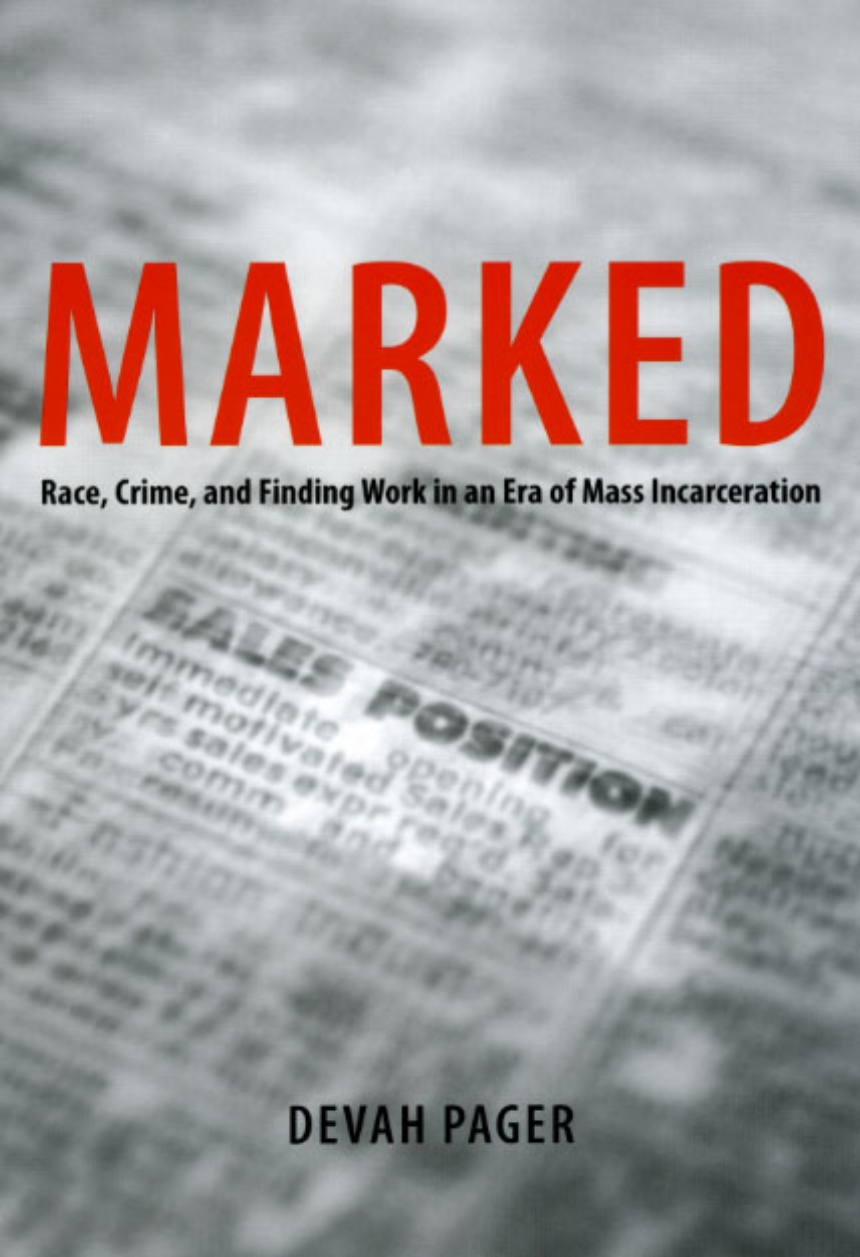Marked
Race, Crime, and Finding Work in an Era of Mass Incarceration
Marked
Race, Crime, and Finding Work in an Era of Mass Incarceration
Nearly every job application asks it: have you ever been convicted of a crime? For the hundreds of thousands of young men leaving American prisons each year, their answer to that question may determine whether they can find work and begin rebuilding their lives.
The product of an innovative field experiment, Marked gives us our first real glimpse into the tremendous difficulties facing ex-offenders in the job market. Devah Pager matched up pairs of young men, randomly assigned them criminal records, then sent them on hundreds of real job searches throughout the city of Milwaukee. Her applicants were attractive, articulate, and capable—yet ex-offenders received less than half the callbacks of the equally qualified applicants without criminal backgrounds. Young black men, meanwhile, paid a particularly high price: those with clean records fared no better in their job searches than white men just out of prison. Such shocking barriers to legitimate work, Pager contends, are an important reason that many ex-prisoners soon find themselves back in the realm of poverty, underground employment, and crime that led them to prison in the first place.
“Using scholarly research, field research in Milwaukee, and graphics, [Pager] shows that ex-offenders, white or black, stand a very poor chance of getting a legitimate job. . . . Both informative and convincing.”—Library Journal
“Marked is that rare book: a penetrating text that rings with moral concern couched in vivid prose—and one of the most useful sociological studies in years.”—Michael Eric Dyson
Read an excerpt.
256 pages | 18 halftones, 5 line drawings | 6 x 9 | © 2007
Sociology: Occupations, Professions, Work, Urban and Rural Sociology
Reviews
Table of Contents
Acknowledgments
Introduction
1 Mass Incarceration and the Problems of Prisoner Reentry
2 The Labor Market Consequences of Incarceration
3 Measuring the Labor Market Consequences of Incarceration
4 The Mark of a Criminal Record
5 The Mark of Race
6 Two Strikes and You’re Out: The Intensification of Racial and Criminal Stigma
7 But What If…? Variations on the Experimental Design
8 Conclusion: Missing the Mark
Notes
References
Index
